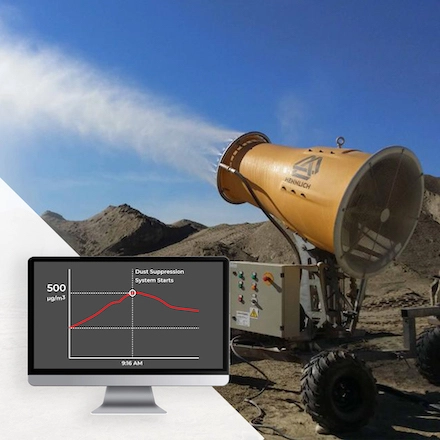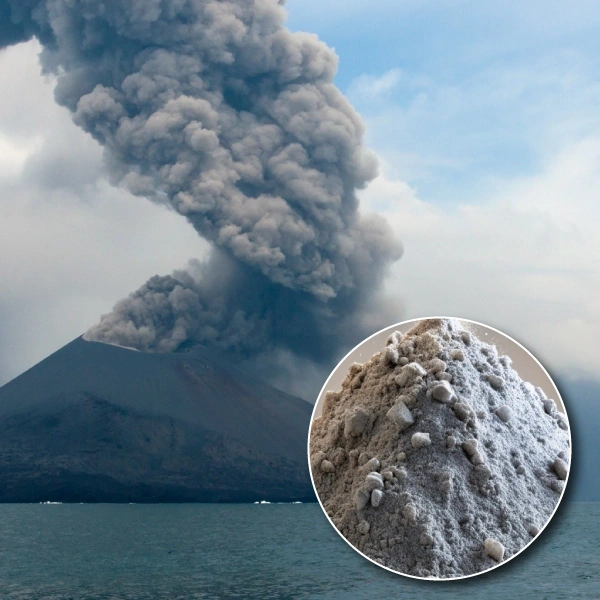Particulate matter, consisting of fine and coarse particles, comes from various sources. Natural occurrences such as volcanic eruptions and dust storms contribute to ambient PM levels. However, human-caused activities are a majority of the problem. Vehicle emissions, industrial activities, and the combustion of fossil fuels release various harmful compounds into our atmosphere, with PM being a significant contributor. These microscopic particles, typically finer than a strand of human hair, can penetrate deep into our respiratory tract, causing various health problems.
The health ramifications of PM exposure are extensive and complex. They span from immediate effects like respiratory irritation and aggravation of existing conditions to the onset of chronic respiratory diseases and heart-related issues. PM’s harmful influence isn’t confined to the physical domain; emerging studies have started to unveil its potential neurological and immune impacts. There is increasing evidence linking PM exposure to cognitive decline, heightened dementia risks, and compromised infection-fighting capabilities of our bodies.
What are the health effects of particulate matter?
Particulate matter (PM), a pervasive blend of solid and liquid particles dispersed in the air, poses a significant threat to public health. From minuscule specks barely visible to the naked eye to larger particles, PM’s presence in our atmosphere is a cause for growing concern due to its wide-ranging and severe health impacts.
Short-term Health Effects of Particulate Matter
Exposure to PM, even for a brief duration, can trigger a variety of respiratory ailments. These include common symptoms like coughing, sneezing, runny nose, and sore throat. More worryingly, PM can cause difficulty in breathing, a sign particularly alarming for individuals with pre-existing respiratory conditions. For those suffering from ailments like asthma or Chronic Obstructive Pulmonary Disease (COPD), PM can exacerbate these conditions, leading to increased discomfort and health risks.
The cardiovascular impacts of short-term PM exposure are equally concerning. There’s an established link between high PM levels and an elevated risk of heart attacks and strokes. This connection highlights the immediate danger PM poses not just to our respiratory system but also to our heart health.
Long-term Health Effects of Particulate Matter
The long-term consequences of PM exposure are even more severe. Continuous exposure can lead to chronic respiratory diseases, including asthma and COPD. The particles in PM can deeply penetrate lung tissues, causing long-term damage and developing severe conditions like lung cancer.
The heart is also at risk. Long-term exposure to PM has been linked to heart diseases, emphasising the need for sustained efforts to reduce PM levels in our environment. The vascular effects of PM can lead to conditions like hypertension and increase the risk of stroke.
Mitigation and Protective Measures
Reducing exposure to PM is crucial. Simple measures like avoiding outdoor exercise during high PM days, using air purifiers, and opting for cleaner transportation and cooking methods can significantly lower exposure levels. Smoking cessation and reducing time spent near pollution sources like power plants are vital steps.
Here are some stats for the year 2022 for the health effects of PM with the sources:

Respiratory Irritation and Exacerbated Conditions
The immediate health effects of PM on the respiratory system can be both noticeable and distressing. Common symptoms include coughing, sneezing, runny nose, and sore throat as the body tries to expel these particles from the airways. However, the impact is more severe for those with pre-existing respiratory conditions like asthma and chronic obstructive pulmonary disease (COPD). PM acts as a trigger, aggravating these conditions and often leading to increased medical interventions such as hospitalisations or emergency room visits. The heightened sensitivity of these individuals to PM underscores the need for effective air quality management and pollution reduction strategies.
Increased Risk of Chronic Respiratory Diseases
Long-term exposure to PM escalates the risk of developing chronic respiratory diseases. Studies have consistently shown that prolonged inhalation of PM can lead to the onset or exacerbation of asthma and COPD. Asthma sufferers may experience more frequent and severe attacks, and those with COPD could see a faster decline in lung function. The development of these conditions affects an individual’s health and quality of life and has broader implications for public health systems, highlighting the need for proactive environmental health policies.
Impaired Lung Function
Even in individuals without pre-existing respiratory conditions, PM can impair lung function. This manifests as reduced lung capacity, decreased exercise tolerance, and heightened susceptibility to respiratory infections. The microscopic size of PM allows it to penetrate the deep recesses of the lungs, damaging the alveoli – the tiny air sacs responsible for oxygen-carbon dioxide exchange. Over time, this damage can lead to shortness of breath, wheezing, and fatigue. In severe cases, continuous exposure to high levels of PM can cause lung fibrosis, a painful condition characterised by scarring of the lung tissue, further delaying respiratory function and significantly impacting a person’s ability to breathe comfortably.
Cardiovascular Impacts
The cardiovascular system is particularly vulnerable to the effects of PM. Studies have established a worrying connection between PM exposure and an increased risk of heart attacks, strokes, and other cardiovascular incidents. This microscopic menace can disrupt normal heart rhythms, escalate blood pressure levels, and contribute to atherosclerosis plaque buildup in arteries. These changes are especially hazardous for individuals with pre-existing heart conditions, making PM a silent yet potent risk factor for cardiovascular diseases.
Neurological Effects
Recent research points to a disturbing link between PM and neurological health. PM is implicated in cognitive decline, neuroinflammation, and a heightened risk of dementia. Inhaling PM can induce inflammation in the brain, potentially triggering or exacerbating neurological disorders. The neurological impacts are far-reaching, encompassing issues like memory loss and concentration difficulties, which could significantly impair daily functioning and quality of life.
Immune System Disruptions
PM’s assault on human health extends to the immune system. Exposure to these particles can compromise the body’s ability to fend off infections, leaving individuals more susceptible to illness. Additionally, PM can aggravate allergic reactions such as rhinitis and conjunctivitis, exacerbating the inflammatory response in the airways. This weakened immune response can lead to higher infections and prolonged illness durations.
Reduced Quality of Life
The consequences of PM exposure are not confined to physical ailments but also intrude upon one’s quality of life. Common symptoms like coughing, difficulty breathing, fatigue, and headaches can limit physical activities, disrupt sleep patterns, and interfere with everyday tasks. In more severe cases, chronic health conditions induced by PM can significantly restrict an individual’s ability to engage in exercise, travel, or enjoy hobbies, leading to a diminished sense of well-being and enjoyment in life.
Increased Premature Mortality
The most grave impact of PM is its link to premature mortality. Long-term exposure to PM can significantly shorten life expectancy, particularly in those with existing health conditions. The World Health Organization estimates that PM exposure contributes to about 7 million deaths globally annually, highlighting the critical need for urgent action to mitigate this risk.

What are the long-term health effects of particulate matter exposure?
Long-term exposure to particulate matter (PM), a complex mixture of solid and liquid particles suspended in the air, poses serious health risks. These particles, often too small to see, can penetrate the lungs and even enter the bloodstream, leading to various health issues.
Reproductive Problems
PM exposure can also impact reproductive health. It has been linked to fertility issues, increased risk of miscarriage, and premature birth. These effects are especially alarming as they not only affect the current generation but can also have implications for the health of future generations.
Cancer
Exposure to PM over an extended period is a risk factor for certain types of cancer, most notably lung cancer. The carcinogenic nature of various PM components, like polycyclic aromatic hydrocarbons (PAHs), contributes to this increased risk.
Reducing Exposure and Mitigating Risks
Individual actions such as avoiding smoking, reducing car usage, using public transportation, avoiding wood-burning fireplaces, keeping windows closed on high PM days, and using air purifiers can help reduce personal exposure to PM.
Community-wide efforts are also crucial. These include reducing emissions from cars and trucks, transitioning to cleaner energy sources in power plants, imposing stricter industrial emission standards, and planting trees to filter PM from the air. By taking these steps, communities can lower PM levels, leading to healthier environments.
What are the short-term health effects of particulate matter exposure?
Though often invisible, particulate matter (PM) significantly impacts our health in the short term. Composed of various solid and liquid particles suspended in the air, PM’s microscopic nature belies its potential to cause immediate and noticeable health effects.
Eye Irritation
The eyes, too, are susceptible to the irritative effects of PM. Exposure can result in redness, itchiness, and watering of the eyes, often accompanied by a burning sensation. In more severe cases, high PM levels can lead to conjunctivitis, characterised by inflammation of the eyelid lining and the surface of the eyeball.
Cardiovascular Effects
PM’s impact extends to the cardiovascular system, even during short-term exposure. It can induce irregular heart rhythms, cause an increase in blood pressure, and lead to inflammation of the blood vessels. These acute effects elevate the risk of cardiovascular events like heart attacks and strokes, especially in those with pre-existing heart conditions.
Reduced Exercise Tolerance
Exposure to PM can impair physical performance, particularly during exercise. The irritation of airways combined with cardiovascular strain can make breathing more difficult, decreasing exercise tolerance. This diminished capacity can impact an individual’s ability to engage in physical activities, potentially affecting their overall fitness and health.
Sleep Disruption
The respiratory and cardiovascular impacts of PM can also disrupt sleep. Symptoms such as coughing, difficulty breathing, and an increased heart rate can hinder the ability to fall and stay asleep, leading to fatigue and impaired cognitive function during the day.
Increased Risk of Infections
PM exposure can compromise the immune system’s effectiveness, increasing susceptibility to respiratory infections. The inflammatory response triggered by PM can damage the airways’ lining, making it easier for pathogens to penetrate and cause infections.
Conclusion
The pervasive particulate matter (PM) pollution calls for immediate and concerted action. As environmental experts, our understanding of the harmful effects of PM on both human health and ecological systems necessitates a response that is both comprehensive and urgent.
The Threat of Particulate Matter
PM is a potent pollutant arising from various natural and anthropogenic sources. While occurrences like volcanic eruptions contribute to PM levels, human activities such as vehicular emissions, industrial processes, and the burning of fossil fuels are the primary contributors. These fine particles, capable of penetrating deep into our lungs, trigger various health issues, from respiratory and cardiovascular diseases to potential neurological and immune system impacts. The insidious nature of PM extends to compromising the quality of life and increasing the risk of premature mortality, especially in individuals with pre-existing health conditions.
The Need for Immediate Action
The urgency of addressing PM pollution cannot be overstated. Our approach must be multifaceted, targeting both the reduction of emissions and the enhancement of public awareness:
- Stricter Emission Standards: Implementing more rigorous emission standards for vehicles, power plants, and industrial facilities is crucial. This step would significantly reduce the PM emissions from these primary sources, reducing the health risks associated with air pollution.
- Transition to Renewable Energy: Moving away from fossil fuels and investing in renewable energy sources like solar and wind power is essential. This shift reduces PM emissions and contributes to mitigating climate change, thereby protecting our environment.
- Enhanced Air Quality Monitoring: Developing and deploying advanced air quality systems is vital. These systems provide critical PM-level data, enabling public health officials and the general public to make informed decisions and take timely action.
- Public Education and Awareness: Educating the public about the health risks posed by PM is imperative. Knowledge empowers individuals to protect themselves, for instance, by using air purifiers and avoiding outdoor activities during high pollution periods.
- Advocacy for Cleaner Air Policies: Pushing for cleaner air policies at local, national, and global levels is critical to systemic change. Advocacy efforts can lead to implementing policies that foster a healthier environment for current and future generations.
Tackling the PM pollution crisis is a collective responsibility that involves governments, industries, communities, and individuals. We can effectively address this environmental challenge by adopting a multi-pronged strategy that includes emission reduction, embracing clean energy, improving air quality monitoring, raising public awareness, and advocating for policy changes. As experts in the field, our role extends beyond analysis and observation; we must actively engage in and promote actions that lead to a healthier, more sustainable world. The fight against the invisible threat of PM is not just an environmental imperative but a moral one, ensuring a safer and healthier future for all.






